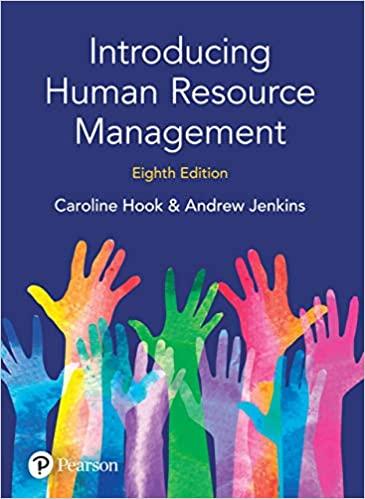The gender pay gap in the UK has come under fresh scrutiny after Carrie Gracie resigned as
Question:
The gender pay gap in the UK has come under fresh scrutiny after Carrie Gracie resigned as the BBC’s China editor, accusing the broadcaster of a “secretive and illegal pay culture” that systematically discriminates against women.
Under government rules introduced last year, companies and public sector bodies with 250 or more employees — including the BBC — have until the end of March to report their mean and median gender pay gaps, the difference in the average bonuses they pay to men and women, and the share of men and women in each quartile of their pay bills.
In compliance with the rules, the BBC last October reported a 9.3 per cent median gender pay gap and a 10.7 per cent mean gap among its employees.
Data collected by the Office for National Statistics last April through the Annual Survey of Hours and Earnings showed that the difference between the hourly pay of the median employed man and median employed woman, accounting for both full-time and part-time employees, was 18.4 per cent.
What do these figures mean?
Gender can affect people’s working lives in different ways. It has been illegal since 1970 for employers in Britain to pay men and women different amounts for doing the same job, but there are many other reasons why, on average, pay differs among men and women.
No single metric will capture the full range of experiences, and the most appropriate and informative measure often depends on the case being considered.
Mean or median?
The FT typically uses the median, or the middle of the distribution, as a measure of average pay. At a given employer, half of the staff earn more than the median salary and half earn less.
But the distribution of pay among employees is usually very skewed. The highest-paid staffers earn significantly more than the lowest paid, so the mean, or average, tends to be much higher than the median.
If Amazon founder Jeff Bezos walked into a room, the “average” person in the room would become a millionaire when measured by the mean.
Because there are generally fewer women in higherpaying roles than men, the gender pay gap as measured by mean earnings is often higher than for median earnings.
As a result, the FT uses the median in most instances because it is closest to the experience of the typical man and the typical woman.
However, the mean often reflects the specific problem of a lack of women in high-paying roles. According to the ONS, the mean hourly gender pay gap for fulltime workers was 14.1 per cent, compared with 9.1 per cent for the median.
Hourly, weekly, monthly or annual pay?
Men and women tend to work different hours, with men more likely to be in full-time jobs and women more likely to be employed part-time. The size of differences in their pay will therefore depend on whether they are measured by hourly, weekly, monthly or annual salaries, with the gap often larger for weekly, monthly or annual wages, compared with hourly pay.
The FT typically focuses on median hourly pay, while others may choose a weekly measure, arguing women often work part-time because they do unpaid work caring for children........
Questions
1. According to the article, what are the main differences between using the mean or median figures to calculate the gender pay gap?
2. What issues may affect the gender pay gap?
3. What do pay quartile bands tell us about pay distribution?
4. What are the possible benefits of examining gender pay gaps for specific groups of workers?
Step by Step Answer:

Introducing Human Resource Management
ISBN: 9781292230344
8th Edition
Authors: Caroline Hook, Andrew Jenkins





